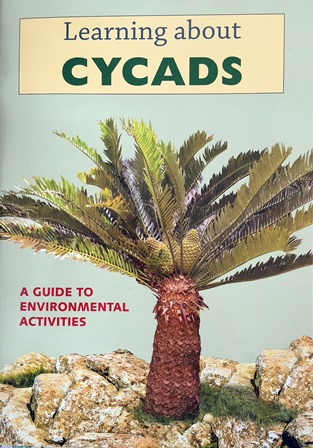EXREMELY harsh penalties are being handed down to convicted wildlife poachers these days, so what’s an appropriate sentence for someone who has pleaded guilty to illegally possessing 38 items from a group of living organisms far more critically endangered than rhinos or pangolins?
That’s a question a Pretoria regional court magistrate will be pondering this week as prosecutors, arguing in aggravation of sentence, call experts to testify about the extreme conservation value of these organisms: cycad plants (Encephalartos species).
Some local cycad species have already been poached out of existence in the wild while others have been reduced to literally a handful. For example, armed guards now protect Encephalartos dyerianus, the critically endangered blue cycad that is clinging to life in the wild on a single small granite hill, less than 10 hectares in extent, in Limpopo province.
The cycad family is the oldest complex life form still in existence anywhere on Earth, with a lineage stretching back an incredible 340 million years and predating the dinosaurs. In fact, cycads have been around so long that they’ve survived three of the five great mass extinction events, including the End Permian extinction of 251 million years ago that is known as “the great dying” and nearly ended life on Earth when 96% of all species went extinct.
“This is a crazy group of plants that are ‘the elders’ of biodiversity and of the plant world. They are weird, amazing, strange, fascinating,” says cycad expert Professor John Donaldson, Chief Director: Biodiversity Research, Assessment and Monitoring at SANBI (SA National Biodiversity Institute) and the Harold Pearson Professor of Botany at the University of Cape Town.
Today, there are still 350-odd cycad species in three genera world-wide, and South Africa has a disproportionate share with 37 Encephalartos species in two genera that also account for more than half of the known cycad species in Africa.
 Three quarters of our 37 species are endemic, meaning they occur naturally only here and nowhere else on Earth. Twelve are “Critically Endangered”, while four are “Endangered” and another four are already considered “Extinct in the Wild”. Two species are believed to have gone extinct in just seven years during the past decade, between 2003 and 2010, and for seven of the critically endangered species there are fewer than 100 plants of each left in the wild – far fewer than rhinos.
Three quarters of our 37 species are endemic, meaning they occur naturally only here and nowhere else on Earth. Twelve are “Critically Endangered”, while four are “Endangered” and another four are already considered “Extinct in the Wild”. Two species are believed to have gone extinct in just seven years during the past decade, between 2003 and 2010, and for seven of the critically endangered species there are fewer than 100 plants of each left in the wild – far fewer than rhinos.
Donaldson, who has co-chaired the SSC (Species Survival Commission) Cycad Specialist Group of the IUCN (International Union for Conservation of Nature) since 1997, warns that cycads everywhere are facing major threats – so much so that they are second only to the sturgeon fish family for the dubious title of the world’s most threatened group of living organisms.
Massive cycad poaching is taking place world-wide and particularly in South Africa, resulting in a biodiversity crisis that eclipses the tragedy of rhino poaching and other illegal wildlife trade. Unfortunately, this crisis has been largely playing out below the radar of public awareness, outrage and concern.
Like other wildlife poaching, it’s human greed that is the major reason for these cycads’ precarious hold on life. Because of their rarity and attractiveness as landscape elements – cycads bestow significant “bragging rights” on garden owners – the plants have great commercial value and constitute big business. There is a significant demand for legal plants (cycads are legally cultivated by some nurseries and collectors), but many specimens are also stolen and poached from the wild for private collections and landscaping, or for illegal seedling propagation for both the domestic and international cycad trade.
In January 2008, 103 extremely rare cycads were stolen from the Lilly Cycad Reserve inside the Selati nature reserve in Limpopo, and in 2014, two cases of cycad theft occurred at Kirstenbosch National Botanical Garden within a fortnight, with 23 plants brazenly hacked from the world-renowned garden. The stolen plants included Albany cycads, the critically endangered Encephalartos latifrons of which there are probably only 80 plants left in the wild in the Bathurst area of the Eastern Cape – too few to reproduce naturally and that now have to be hand-pollinated.
Some cycads are used in traditional African medicine, so bark poaching for the muthi trade is also taking a toll, while other threats include habitat transformation such as urban expansion and coastal resort developments; incompatible land-use practices; climate change; alien invasive plant species; and invasive pests and pathogens.
The extent of the ecological damage wrought by poaching in recent years is evident from a “repeat photography” project initiated in 1996. Some 250 historical photos depicting cycad populations were analysed and when 130 of these sites were located and re-visited, it was found that some 76% of all the cycads shown in the original photographs were still there. But in 2016 – in other words, just 20 years later – when the same sites were again re-visited, only 16% of the plants remained.
Fortunately, it’s not all doom and gloom. “As conservation biologists we look for positives, and we can do something for cycads. South Africa has already done a lot, and we will continue to expand on that,” Donaldson says.
“Positives” include South Africa having ratified the Convention on Biological Diversity, which imposes rigorous legal obligations on signatories to protect their indigenous species – including, obviously, cycads. And this country is also a signatory to the Convention on International Trade in Endangered Species of Wild Fauna and Flora (CITES). All Encephalartos species are included on Appendix I of CITES and international exports for commercial purposes are therefore prohibited, although small specimens artificially propagated for commercial purposes can still be legally traded.
Crucially, the government gazetted a “Biodiversity Management Plan for Eleven Critically Endangered and four Endangered Encephalartos Cycad Species” under the National Environmental Management Act on April 28 last year 2017. This management plan stresses that the best way to guarantee the long-term survival of cycads is through maintaining “vigorous” populations in the wild, so-called in situ conservation. However, many Encephalartos species have now declined to the point where an “integrated approach” that includes both in situ and ex situ (off-site – for example, in botanical gardens) cultivation is necessary to prevent extinction.
Other conservation measures include:
* The use of microchips to mark wild plants;
* Marking wild plants with data microdots, similar to the system used in the motor industry; and
* The use of transponders or tag devices that immediately alert law enforcement authorities when marked plants are poached or when the tag devices are tampered with.
Then there is also “Programme 250-plus”, aimed at getting the number of plants of critically endangered cycad species above the 250 threshold, and “Habitat for 100” that involves trying to set aside at least 100 square kilometres of protected habitats for each of the endangered cycads for the next 100 years. SANBI has also initiated critical restoration programmes that focus particularly on pollinators – now known to be beetles.
Two further cycad conservation initiatives are underway, both of which hold major promise for the future.
The first, involving close collaboration between scientists at SANBI and UCT, is research into the use of stable isotopes to determine the origin of Encephalartos species. Stable isotopes are chemical tracers that record the characteristics of the environment such as geology and rainfall, and these tracers are fixed in the plant tissue, the Biodiversity Management Plan explains. Two research phases have already been conducted and early results are promising, with the growing histories of two cycad specimens in national botanical gardens being successfully reconstructed through stable isotope ratios and radio carbon dating.
The next phase of this research is the development of a forensic stable isotope reference database for wild Encephalartos populations that can be used in future investigations and prosecutions. This will help prove whether a cycad was actually grown in the soil as claimed by any “legal owner”.
This method may have its first legal exposure in the Pretoria regional court this week [May 15], where a man has already pleaded guilty to a charge of the illegal possession of 38 wild cycads of eight different species. Michele Pfab, Scientific Co-coordinator: Scientific Authority at SANBI’s Pretoria National Botanical Garden, is being called by the prosecution to give evidence in aggravation of sentence, and she may refer to stable isotope tests in her testimony about the current status of cycad populations in the wild.
The second initiative is critical for long-term cycad conservation because it targets children. This is the recent publication of a workbook Learning about Cycads: A guide to environmental activities, designed for use by teachers as a classroom resource in their lessons about biodiversity and plant conservation that form part of the Life Sciences curriculum in schools across South Africa.
Published by the Western Cape Primary Science Programme in association with the Botanical Society and SANBI, the workbook helps meet three of the 16 targets of South Africa’s National Strategy for Plant Conservation with its focus on awareness through education and building people’s skills to implement plant conservation more effectively. “This conversation is starting with the cycad, but there is more to come,” Botanical Society chief executive Zaitoon Rabaney said at the launch.
Donaldson, keynote speaker at the workbook launch, conceded that scientists had not been very successful at promoting and raising awareness of the need for conservation, through changing the mind-set of the next generation. “Setting biological targets [for managing endangered species] gets done pretty well, but globally we scientists have been very bad at changing attitudes and at promoting education – we get caught short every time,” he lamented.
But hopefully, that is now changing. And conservationists want any sentence handed down in the Pretoria regional court to reinforce the message that South Africa’s cycads – like our rhinos, elephants, pangolins and all other endangered wildlife species including plants – are a crucial part of our unique national heritage, and are not simply there for the plundering by a few greedy individuals.

